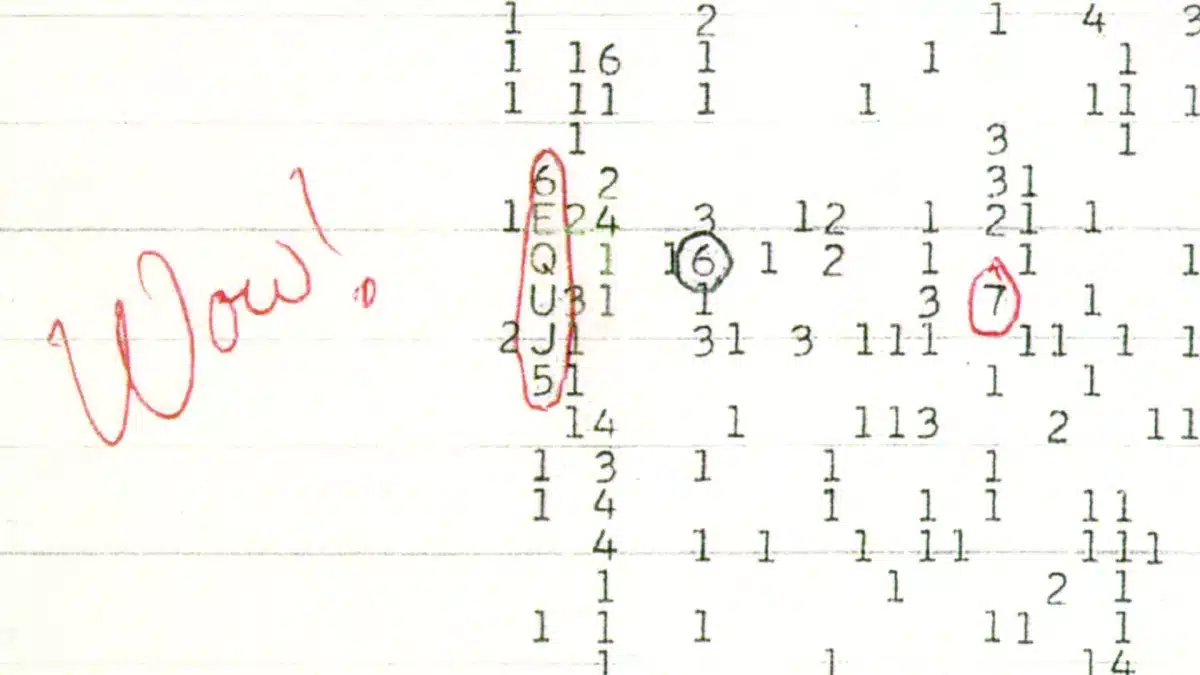New Research brings up another unsuccessful attempt to find a reply to the signal
Another inquiry into the so-called Wow! signal was unsuccessful this time, however, the research team claimed the collaboration holds promise for future efforts to find intelligent extraterrestrial life.
In a study released in May, a potential zone for the signal was initially detected around a sun-like star 1,800 light-years away in the constellation Sagittarius. This star was the focus of the targeted zone.
The Green Bank Telescope and the Allen Telescope Array, two SETI-funded telescopes, began working together for the first time as a result of the search. The observations were made by the telescopes on May 21; Green Bank conducted two 30-minute observations, and ATA made six 5-minute observations. According to SETI, their observations also coincided for over ten minutes.
According to a Sept. 29 press release on the research, Karen Perez, a PhD student at Columbia University who spearheaded the research, said this of the event: “this is the first time a targeted search for the Wow! signal has been conducted.” The research was carried out by the SETI Institute’s Breakthrough Listen programme, which is part of the search for extraterrestrial intelligence (SETI).
On August 15, 1977, the Wow! Signal was broadcast from space via radio, but in the 45 years after that momentous evening, nobody has discovered any conclusive proof of a repeat signal, despite its regular pattern over a short period of time. The Big Ear radio telescope at Ohio State University in the United States discovered this powerful narrowband radio signal which was later used to bolster the search for extraterrestrial civilisation. The signal had the usual signs of extraterrestrial origin and looked to have come from the direction of the constellation Sagittarius.
The abnormality was found a few days later when astronomer Jerry R. Ehman was studying the recorded data. He was so amazed by the outcome that he circled the number “6EQUJ5”, which represents the signal’s intensity, and typed the comment “Wow!” beside it on the computer printout, giving the incident its well-known moniker.
Ehman and other astronomers made several attempts to locate and classify the signal. The signal was supposed to appear in each of the telescope’s feed horns three minutes apart, but that did not happen. In the months after the finding, Ehman used Big Ear in an unsuccessful attempt to find recurrences. Robert H. Gray used the Oak Ridge Observatory’s META array to look for the event in 1987 and 1989 but was also unable to detect it.
H. Paul Shuch, the executive director of the SETI League, made several drift-scan observations of the Wow! signal’s coordinates with a 12-meter radio telescope at the National Radio Astronomy Observatory in Green Bank, West Virginia, in July 1995 as a test of the signal detection software that would be used in its upcoming Project Argus, but also received a null result.
Gray once more looked for the signal in 1995 and 1996 using the Very Large Array, which is a lot more sensitive than Big Ear. Gray and Simon Ellingsen afterwards used the 26-meter radio telescope at the Mount Pleasant Radio Observatory of the University of Tasmania to look for repeats of the event in 1999. At places nearby, six 14-hour observations were undertaken, but nothing resembling the Wow! signal was found.
Hipparcos 34511, 33277, and 43587 were the targets of a digital stream that Arecibo Observatory broadcast in 2012 to commemorate the Wow! signal’s 35th anniversary. The transmission was made up of roughly 10,000 tweets with the hashtag “#ChasingUFOs” that were sought for the purpose by the National Geographic Channel. The sponsor also provided a number of video vignettes with spoken remarks from other famous people.
The Arecibo scientists attached a repeating-sequence header to each individual message in order to make it more likely that any extraterrestrial recipients would recognise the signal as an intentional communication from another intelligent life form. They also beamed the transmission at a power level that is roughly 20 times that of the most potent commercial radio transmitter.















